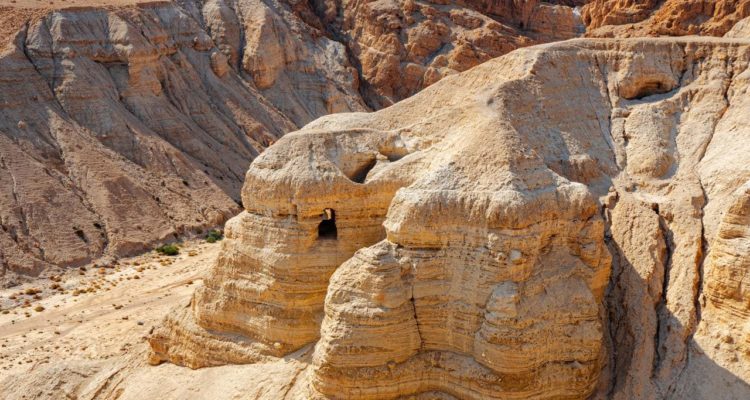Mohammed Dhib was a 15-year-old shepherd boy when he threw a stone into a cave and found scrolls that had been hidden for 20 centuries. Boy, did he live to regret it.
What are known as the Qumran caves pockmark the eastern slopes of crumbly marlstone that form the escarpment hemming in the Dead Sea separating Israel and Jordan. For millennia, the caves have overlooked the lowest point of the planet – the shores of the Dead Sea are 431m below sea level. It is the northern end of the Great Rift Valley, a trench formed by the tectonic plates wrenching North Africa in two.
These parched terraces of the Judaean Desert have weathered steadily over the ages as human history played out below. For 5000 years before Jesus Christ walked these hills, Bedouins moved through the valley in an unceasing search for water and the brief blooms of river bed flora on which they fed goats, sheep and camels.
In 1947, the year the United Nations voted to establish the state of Israel, it was estimated that more than 100,000 Bedouins led the untamed lives of nomads in nearby deserts, among them the Ta’amireh tribe into which Mohammed Dhib had been born in 1931. Not yet 16, he’d have known a bit about the outside world, and planes sometimes flew overhead, as they had since the war that had not long ended, but at ground level nothing much was changing. Not in a hurry, anyway. His family lived on near-Biblical terms roaming the valleys, raising animals and living off their thin milk and gaunt muscle.
As the winter’s cool gave way to warmer days, Dhib and two older cousins, Jum’a Muhammad and Khalil Musa, were herding their family’s goats around the ruins of an old fort, Khirbet Qumran, near which an ancient cemetery had been discovered a century before. (Curiously, most of the remains were male, leading to conjecture about the pre-Christian settlement. Had it been an elevated, defensive position, and these were the bones of soldiers? Or was it the base of a male-dominated religious sect?)
Read the article by Alan Howe in The Australian.

